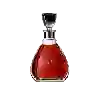Discovering the wine region of France
France, home of Bordeaux, Burgundy and Champagne, is arguably the world's largest wine-producing country. For centuries, it has produced more wine - and apparently better quality - than any other country. Wine is embedded in French culture at almost every level of society; it is the drink of the elite and the common people, and a key symbol of Roman Catholicism, the majority religion in France.
However, the lasting appeal of French wine is not necessarily its Volume or prestige, but rather the variety of styles available.
Consumer preferences have Evolved over the centuries, encouraging the development of New wine styles based on the Terroir and Grape varieties available to French winemakers. Red, white, rosé, Sweet, Dry, sparkling, opulent, austere, mineral, fruity - French vineyards have produced wines that fit each of these descriptors.
The diversity of French wines is due, in part, to the country's wide variety of climates. Champagne, its northernmost region, has one of the coolest climates in the wine world, in stark contrast to the hot, dry Rhone Valley, 560 km to the Southeast.
Bordeaux, in the southwest, has a maritime climate strongly influenced by the Atlantic Ocean to the west and by the various rivers that weave their way through its vineyards. Far from any oceanic influence, eastern regions such as Burgundy and Alsace have a continental climate, with hot, dry summers and cold winters. In the deep south of France, Provence and Languedoc-Roussillon have a definite Mediterranean climate, characterized by hot summers and relatively mild winters.
Geology and topography play an equally important role in the diversity of French wines.



































































































